Without proper project document management (try saying that three times fast), processes can go undocumented, projects can lack direction, and employees can struggle with their day-to-day work.
So if organizing and managing your project documentation is so important, why does it so often fall by the wayside when schedules get full and priorities rearranged?
The answer is often misaligned processes or software that doesn’t fit your needs. If either of these is a challenge for you, this piece will help. We’re going to cover everything you need to know about project document management, the benefits of using it, the best practices you should follow, and the features you need to look out for in project document management software.
Let’s dive in.

What is project document management?
Project document management is the process of creating, sharing, and managing project documents.
But what exactly is a project document?
From the initial project schedule all the way through to project closure, project documentation is any document that plays a part in the project lifecycle.
Project documentation aligns company processes, helps teams make informed decisions, and makes sure everyone knows how to successfully deliver the project.
What are the benefits of project document management?
Now that we know what project document management is, let’s take a look at some of the main benefits of using it.
1. Find information easily
With project document management, there’s no need to flick back and forth between various sources. And there’s no confusion about where certain documents are saved.
All of your project documents live in one location. As you can imagine, this makes it pretty easy for team members to find the information they need.
With everything hosted in the same place, your project team knows where to go to find the information they need. If your team uses a Work OS, like monday.com, you can store all of your information in the same platform you use for work.
monday workdocs, the newest building block in the monday.com Work OS, enables you to create documents, collaborate with your team, and turn words into action items — all on one platform. This means your team can spend less time hunting down key documents and more time being productive and focusing on their work.
2. Standardize your processes
By defining each step within a business process — whether that’s moving a consumer through the sales funnel or onboarding a new employee— you can ensure that no matter how fast your team grows, the quality and processes each person goes through will be consistent.
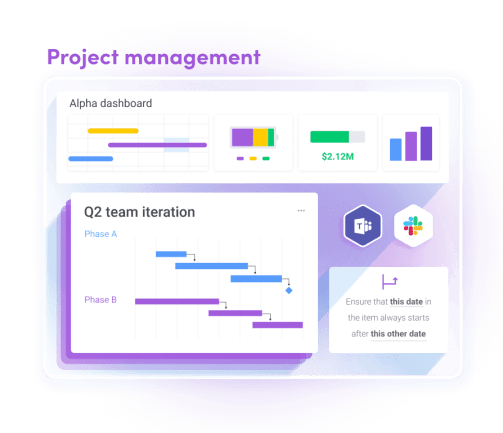
Standardization is crucial for every team, but there are two main benefits:
- It aligns your team. Standardized processes keep your team working on the same page. Even if there’s a mixture of departments working on a single project, everyone follows the same process.
- It improves efficiency. With standardized processes, your workflow is more efficient. Why? Because there’s no need to worry about the next steps. Everyone knows what they need to do, when they need to do it, and how to move the project forward.
3. Minimize errors
One of the great things about project document management is version control.
If you’re not familiar with the term, version control allows you to track and review past versions of the same document. It creates an audit trail so you can see what changes have been made and who made them.
This makes it easy for team leaders and managers to review documents and spot mistakes.
Changes become more apparent with version control, allowing the reader to scan the document and focus only on the parts that have been changed.
As a result, the quality of project documentation remains high.
Project document management optimization and best practices
Having reviewed its benefits, you might be wondering how you can put project document management into action.
Fortunately, we’ve outlined some best practices you can follow when utilizing project document management.
Let’s take a look.
Plan your project document management
Planning your project document management will give you a solid foundation right from the get-go. Without proper planning, you could lack the direction and organization you need to stay on top of all of your documents.
Not to mention, planning gives you the chance to share the information with your team before anything goes live.
But how can you plan your project document management?
Ideally, you’d use a work management software. With the right system, you can create an entire project document plan that’s both robust and flexible. Using workdocs you can create, collaborate on, and store you documents in the same workspace you execute your document plan.
monday.com allows you to plan your entire workflow with pre-made templates so you can get started in minutes.
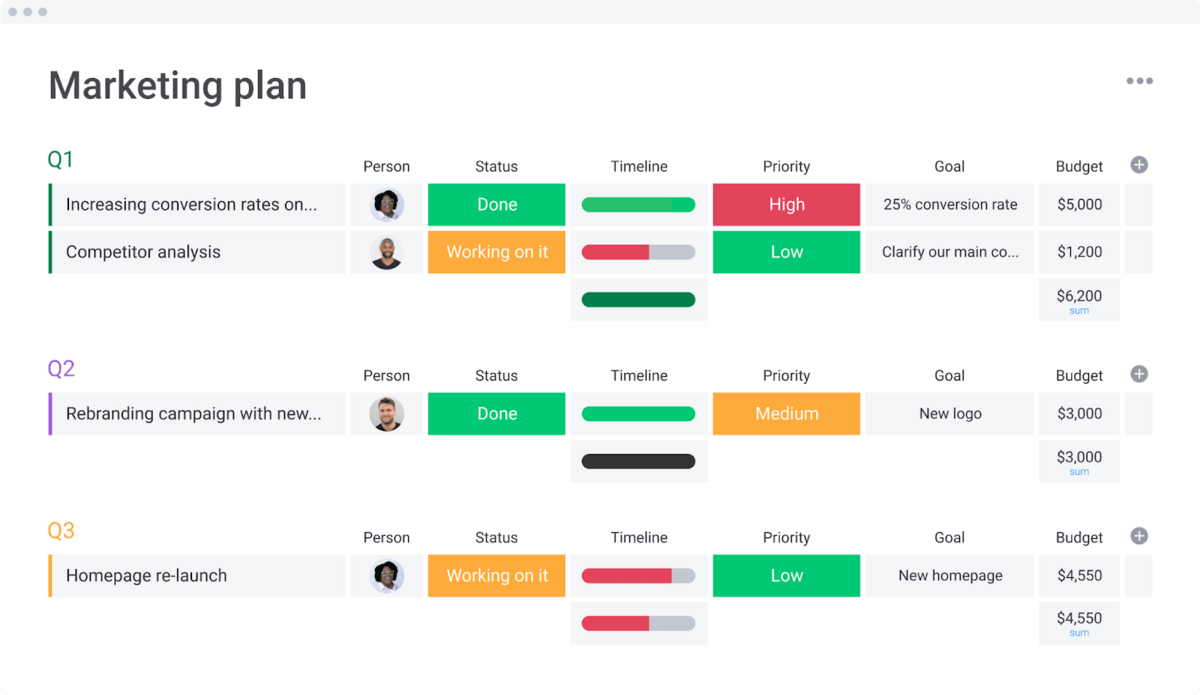
Share processes with the entire team
Once you’ve finalized your project document plan, you need to share the information with your entire team.This keeps everyone up to speed on the latest processes and makes sure that everyone is aligned.
But sending disjoined emails and direct messages doesn’t exactly start your process off on the right foot. Shared inbox tools may be an effective way to ensure everyone is on the same page when it comes to collaboration. If you’ve created your plan and created your documentation in your Work OS, it makes sense to use it to share the information with your team, right?
With monday.com, for example, you can share updates with specific teams and users, or even build automations to let them know when a new plan has been created or new document added.
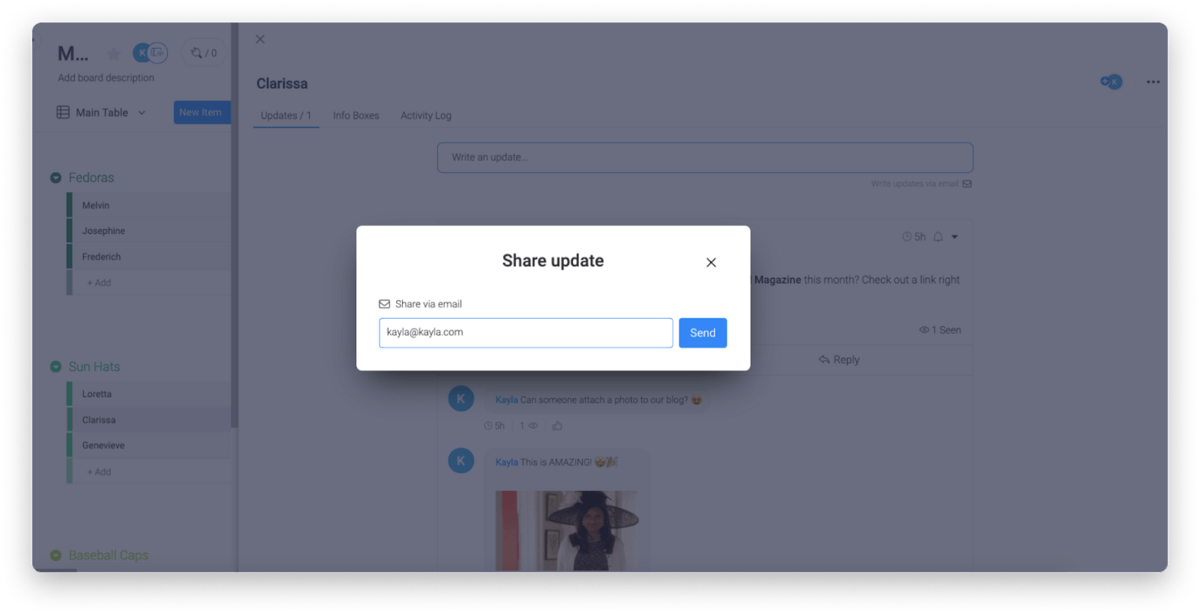
Archive old project documents
When you have a document that your team has created that is no longer up-to-date or needed, would you delete it? The answer (hopefully) is no.
Any information your team has created could be valuable in the future to new joiners or for the sake of keeping record. But, that doesn’t mean you want it at the forefront of your document storage. So, what do you do?
Archive it.
Archiving allows you to store out-of-date project documents. As a result, you have more space for active documents.
In other words, archiving keeps your project information relevant and up-to-date.
It also makes it easier for your team to navigate documents. With less information to sift through, it’s easier for them to find what they need.

monday.com tip: if you’re using a work management system, you can automatically archive certain items to save you the time and hassle of doing it manually.
What to look for in project document management software
We’ve already talked a little about how using work management software can help you manage your project documents.
But what exactly should you be looking for in a project document management system?
As we all know, there are a lot of platforms out there to choose from. So we’ve outlined 3 key features you should look out for. This should help you narrow down your search and find the right software for your business.
1. Uses shared documents
Shared documents help teams collaborate.
Whether that’s working together on a project plan or reviewing a newly-documented process, using shared electronic documents allows everyone involved to access the live version of the document whenever they want.
But if you’re not able to use shared documents, collaboration becomes difficult.
There’ll only be one version of a document, and no one can make changes in real-time. Chances are, it’ll bounce around from person to person via email for a few days before the final edit makes the cut.
It sounds pretty time-consuming, right?
But with a platform that offers shared documents, the process becomes streamlined.
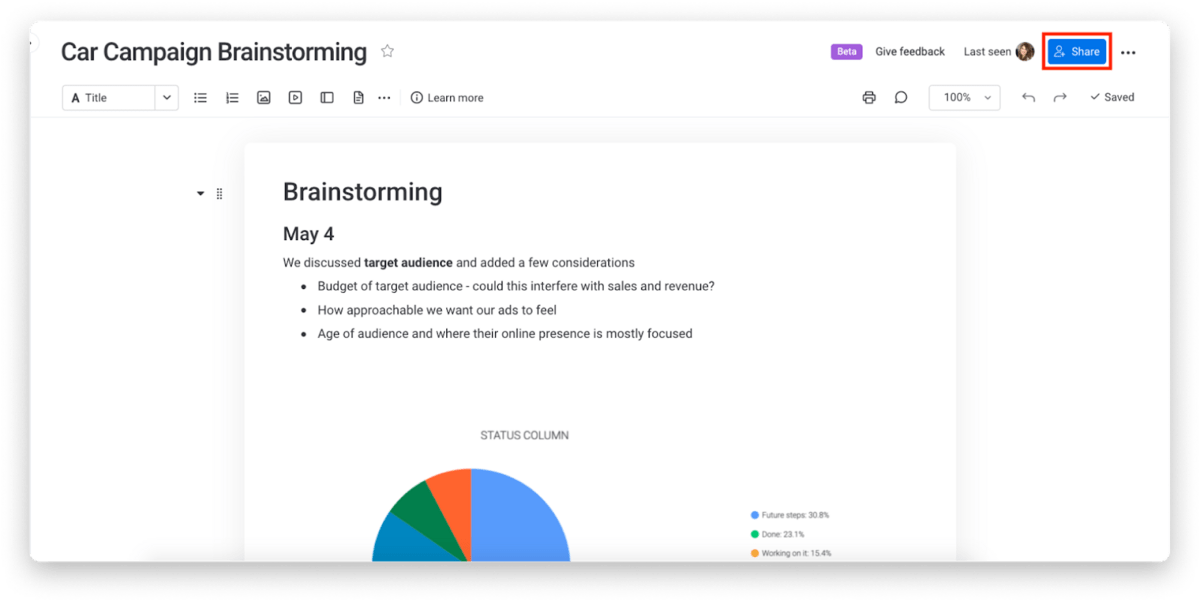
You can collaborate instantly and make your workflow much more efficient.
So make sure the electronic document management system you choose allows you to share documents and files with your team. Like monday.com Work OS, for example.
With our software, users can easily collaborate in our monday workdocs and share files with their team.
2. Creates customizable workflows
You want a platform that allows you to manage your project documents as efficiently as possible, right?
If you answered yes, you need a customizable platform.
With the help of customizations, you can create a project document management system that’s perfectly suited to your needs as a business.
Take a look at monday.com, for example.

Our software is incredibly customizable. You can add automations, change the way you view your projects, and even integrate third-party tools into the software.
3. Has robust data security
If you’re hosting all of your digital documents in one location, you need to keep them safe and secure. The last thing you want is for hackers and viruses to access your business information.
To find a platform with solid security features, search for their security compliance certifications. Accreditations such as ISO Certifications show that the platform has substantial security systems in place, so keep an eye out for this information.Most platforms also outline their security protocols on their websites, so you can find more information about the ins and outs of their security protocols by doing a bit of research.
Take a look at monday.com’s trust center to see the type of information you can expect to find.
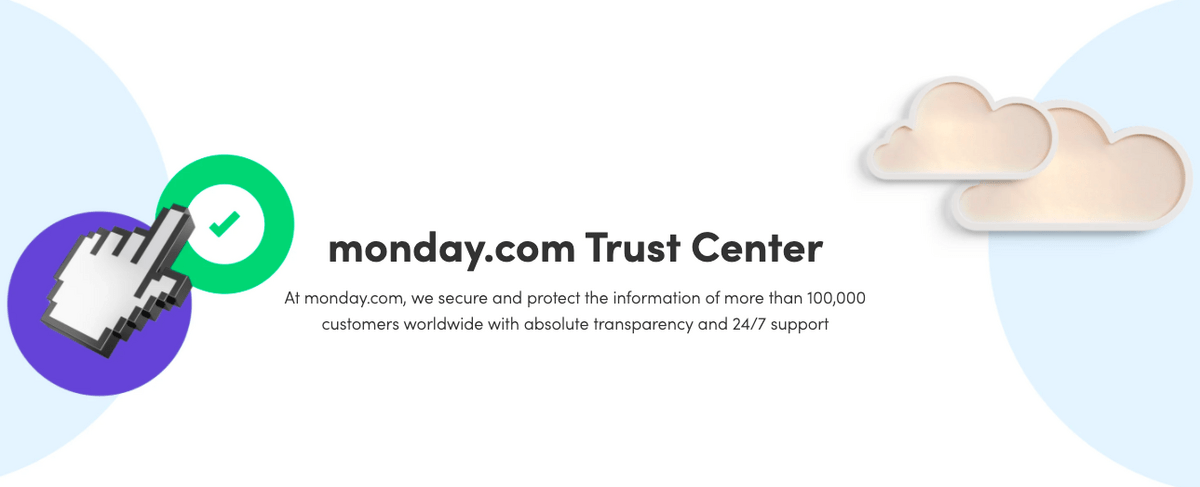
Start using project document management
Now that you have a full picture of what project document management is, you can see how crucial it is to your organization and their shared success.
If you want to put your newfound knowledge into action, why not get started with monday.com? We’d recommend using our project management template to get things off the ground.

